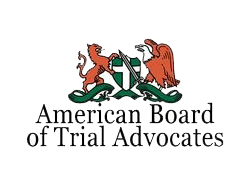What is Aspiration After Surgery
Aspiration occurs when food, liquid, or other substances are inhaled into the lungs instead of being swallowed into the stomach. This is a serious condition, especially after surgery, and can lead to a range of complications, including aspiration pneumonia. After undergoing surgical procedures, particularly when general anesthesia is involved, patients can be at higher risk for aspiration due to the suppression of normal swallowing and protective reflexes.
One of the primary causes of aspiration after surgery is when the muscles in the digestive and respiratory systems are temporarily paralyzed. This condition allows stomach contents to move up the esophagus and into the mouth, increasing the risk of pulmonary aspiration. Surgical teams must be vigilant about preventing aspiration, particularly during emergency surgeries or procedures that require deep sedation.
Factors That Influence Aspiration Risk
Aspiration during surgery can occur at any point during the procedure, particularly during intubation or extubation. The surgical team’s awareness of this risk is crucial, as immediate intervention can prevent stomach contents from entering the lungs while the patient is under anesthesia.
Several factors can increase the likelihood of aspiration during surgery. Critically ill patients or those with a history of gastrointestinal issues, such as gastrointestinal obstruction or previous esophageal surgery, are more vulnerable. These conditions can compromise a patient’s ability to swallow and protect their airways during surgery, making aspiration events more likely. Additionally, the use of general anesthesia often prevents patients from clearing their airways, heightening the risk of aspiration.
Elderly patients, who may have reduced pulmonary compliance and weaker swallowing reflexes, are also at an increased risk. Moreover, patients with a history of active vomiting or those undergoing emergency surgery are particularly vulnerable to aspiration. These factors can make it more difficult to prevent aspiration during the surgical procedure, particularly if rapid sequence induction is not performed properly. The American Society of Anesthesiologists emphasizes the importance of minimizing aspiration risk through proper anesthesia techniques and vigilant monitoring.
Types of Pulmonary Complications Caused by Aspiration
Aspiration can lead to several types of pulmonary complications. One of the most common is aspiration pneumonitis, an inflammatory response in the lungs due to the inhalation of foreign materials. If left untreated, this condition can progress into aspiration pneumonia, which occurs when bacteria from the aspirated material infect the lungs. Both conditions can result in severe respiratory distress and require prompt medical intervention.
Postoperative developed pneumonia can be particularly concerning as it often develops after patients undergo major surgeries, especially if they are sedated or have difficulty clearing their airways. Symptoms of aspiration pneumonia include abnormal breath sounds, chest pain, and a decrease in the patient’s oxygen saturation levels. These signs can indicate a serious infection in the lungs, which may require antibiotics or surgical intervention to address.
How Aspiration Impacts Clinical Outcomes
Aspiration during or after surgery can dramatically alter a patient’s clinical outcome, particularly when aspiration pneumonitis or aspiration pneumonia develops. These complications can extend recovery time, delay discharge from the hospital, and result in additional medical procedures or long-term treatments. Critically ill patients or those with multiple risk factors may face a more difficult recovery and an increased chance of mortality when aspiration is not quickly recognized and addressed.
Intraoperative aspiration events can also complicate surgical procedures and interfere with anesthesia management, creating difficulties securing the airway and maintaining stable oxygen levels. For patients already struggling with respiratory function or other chronic illnesses, even minor episodes of pulmonary aspiration can lead to significant setbacks. The financial burden and emotional toll these complications place on families often add another layer of difficulty during an already challenging time.
The Importance of Systematic Reviews and Medical Guidelines
Medical research plays a key role in identifying risk factors and improving preventive measures against aspiration-related complications. A systematic review concluded that prompt diagnosis, clear protocols, and the use of evidence-based practices significantly reduce the incidence of postoperative aspiration pneumonia. These findings have shaped modern surgical protocols, including how anesthesia is administered and how patients are positioned during surgery.
Organizations like the American Society of Anesthesiologists provide detailed guidelines on managing aspiration risk in patients undergoing surgery. Recommendations include evaluating patients for known risk factors, using medications like proton pump inhibitors when appropriate, and employing careful monitoring strategies during and after procedures. By integrating data from case studies and reviews, healthcare teams are better equipped to prevent pulmonary aspiration and improve safety outcomes in both routine and emergency room settings.
Preventive Measures to Minimize Aspiration Risk
To prevent pulmonary aspiration during surgery, healthcare providers must take several proactive steps. First, ensuring proper patient positioning before and during surgery can reduce the likelihood of aspiration. The surgical team must monitor the patient’s stomach contents and, if necessary, employ measures such as positive end-expiratory pressure (PEEP) to help maintain airway integrity.
Additionally, patients undergoing surgery should be carefully assessed for risk factors such as gastrointestinal disorders, poor pulmonary compliance, or a history of aspiration events. For high-risk patients, preventive measures might include the use of proton pump inhibitors to reduce stomach acid or preoperative fasting to reduce stomach contents. When emergency surgery is required, it’s crucial to implement rapid sequence induction techniques to minimize aspiration risk during anesthesia administration.
Postoperative Management of Aspiration
Following surgery, patients must be closely monitored for signs of aspiration and its associated complications. Regular assessments of the patient’s respiratory function, including oxygen saturation levels, should be performed to detect any early signs of aspiration pneumonia. If symptoms such as abnormal breath sounds, chest pain, or difficulty breathing arise, further diagnostic tests such as chest X-rays or CT scans may be necessary to confirm the presence of pneumonia or other respiratory issues.
For patients who develop severe aspiration, mechanical ventilation may be required to support breathing while the underlying cause is treated. In some cases, surgical intervention may be necessary to remove aspirated material or drain infected areas in the lungs. As part of the recovery process, these patients may need extended hospitalization and respiratory therapy to fully recover from the effects of aspiration.
The Role of Medical Negligence in Aspiration Complications
Unfortunately, aspiration can sometimes be the result of medical negligence during surgery. Whether due to improper patient positioning, failure to monitor a patient adequately, or errors during anesthesia administration, aspiration-related complications can lead to serious and even life-threatening conditions. A systematic review concluded that prompt and appropriate medical interventions are critical to prevent these complications from escalating.
In cases where aspiration occurs due to preventable errors, patients or their families may be entitled to seek compensation for medical expenses, lost wages, and other damages resulting from the prolonged hospital stay or the need for additional surgical interventions. If you or a loved one has experienced complications due to aspiration after surgery, seeking legal assistance can help ensure that your case is appropriately addressed.
Why Choose Davis & Davis for Your Case
At Davis & Davis, we understand the severe consequences that can result from aspiration after surgery. With over 70 years of combined experience and a track record of more than 300 jury trials, we are committed to holding medical professionals accountable when negligence leads to serious complications like aspiration pneumonia. Our team focuses exclusively on medical malpractice cases, providing us with the insight and expertise necessary to navigate complex cases involving surgical errors.
If you or a loved one has suffered due to aspiration during surgery, we can help you seek justice and recover compensation for the additional medical costs and hardships you’ve faced. We work closely with leading experts to evaluate each case thoroughly, ensuring that our clients receive the representation they deserve. A Texas family can seek compensation for their additional medical bills and other expenses, as well as for lost wages and non-economic damages. For a free consultation, call (713) 781-5200 or fill out a contact form.
FAQs About Post-Surgery Aspiration and Pneumonia Cases
What is aspiration pneumonia, and how does it occur after surgery?
Aspiration pneumonia occurs when foreign substances, such as food or liquids, are inhaled into the lungs, leading to infection. After surgery, especially under general anesthesia, patients may have reduced reflexes and an increased risk of pulmonary aspiration. If stomach contents enter the lungs during or after surgery, it can result in aspiration pneumonia, a serious condition that requires prompt medical treatment.
How can postoperative pulmonary complications be prevented after surgery?
Preventing postoperative pulmonary complications, such as aspiration pneumonia, begins with careful monitoring and appropriate positioning of the patient during and after surgery. Factors like general anesthesia, risk factors such as previous esophageal surgery, and lack of protective airway reflexes contribute to increased risk. Employing preventive measures, such as fastidious suctioning of the airway and proper medication management, can help reduce complications related to aspiration.
What is aspiration pneumonitis, and how does it relate to aspiration?
Aspiration pneumonitis is the inflammation of the lungs caused by inhaling foreign substances, such as food, fluids, or vomit, into the airway. This can occur during surgery, especially when patients are under general anesthesia. When stomach contents enter the lungs, it causes inflammation and can lead to more severe complications like aspiration pneumonia if untreated. Early detection and management are key to preventing further lung damage.
How does acute respiratory distress syndrome (ARDS) develop after aspiration?
Acute respiratory distress syndrome (ARDS) can develop after a severe aspiration event, where aspirated materials cause significant injury to the lungs. This can lead to widespread inflammation, oxygen deprivation, and respiratory failure. ARDS is a life-threatening condition that requires aggressive treatment, including mechanical ventilation, and can complicate recovery after surgery. Prevention and early intervention are critical in reducing the risk of ARDS after aspiration.
What risk factors increase the likelihood of intraoperative aspiration during surgery?
Several risk factors can increase the likelihood of intraoperative aspiration during surgery. These include previous esophageal surgery, conditions that affect swallowing, obesity, and poor pulmonary compliance. General anesthesia can also impair the patient’s ability to protect their airway during surgery, making it easier for stomach contents to enter the lungs. By identifying these risk factors before surgery, healthcare providers can take preventive measures to reduce the risk of pulmonary aspiration.









